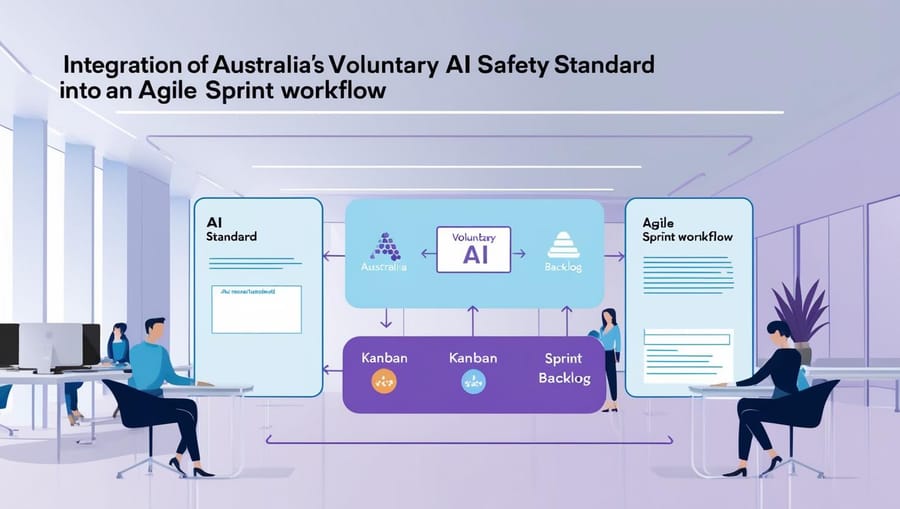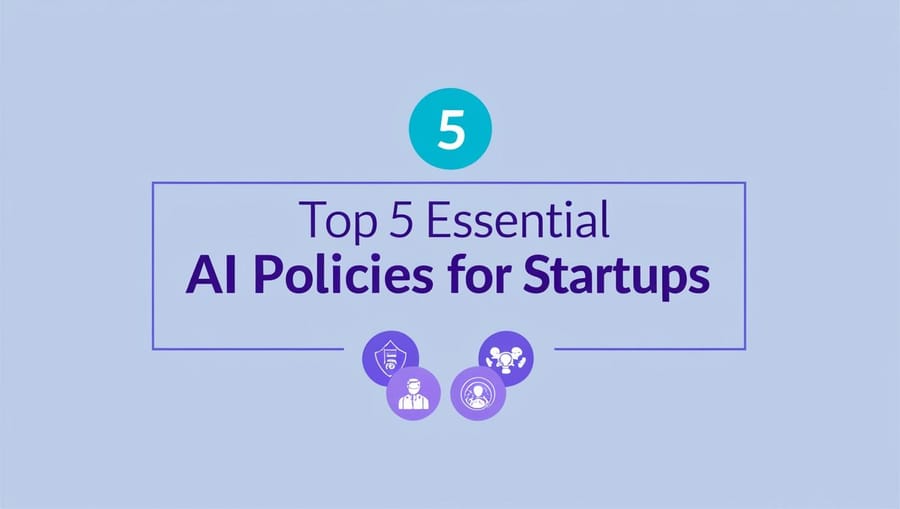Introduction: Why ESG Measurement Matters for AI
As Artificial Intelligence (AI) becomes deeply integrated into businesses and society, its impact on Environmental, Social, and Governance (ESG) factors is gaining scrutiny. Measuring ESG for AI is critical for ensuring responsible AI development, minimizing ethical risks, and aligning AI innovation with sustainability goals.
Why ESG Metrics for AI Are Important
✅ Ensures AI systems align with corporate sustainability goals.
✅ Provides accountability and transparency in AI governance.
✅ Helps organizations meet global regulatory compliance (EU AI Act, NIST AI RMF, ISO 42001).
✅ Mitigates risks related to AI bias, energy consumption, and unethical practices.
🔹 Example: A financial institution measuring AI bias and fairness scores to ensure fair lending decisions while reducing its carbon footprint from AI workloads.
1. ESG Metrics for AI: What Should Be Measured?
To measure ESG performance for AI, organizations must track key performance indicators (KPIs) across Environmental, Social, and Governance dimensions.
🔹 Environmental Metrics (E) – AI’s Carbon Footprint & Sustainability
- Energy Consumption of AI Models – Measure electricity usage during AI training and inference.
- Carbon Emissions – Assess AI-related CO₂ emissions, especially for large-scale models.
- Use of Renewable Energy – Evaluate the proportion of AI systems powered by green energy.
- Sustainable AI Development – Track AI models optimized for efficiency (e.g., low-energy machine learning techniques).
🔹 Example: Google DeepMind's AI reducing energy usage in data centers by 40% through optimization.
🔹 Social Metrics (S) – Fairness, Ethics & Inclusion
- Bias & Fairness Audits – Measure AI decision-making fairness across demographics.
- Diversity in AI Development – Track the representation of diverse teams building AI systems.
- AI Impact on Human Rights – Assess AI-driven risks in surveillance, discrimination, and privacy.
- Accessibility & Inclusion – Ensure AI services are accessible to diverse user groups.
🔹 Example: A hiring AI system audited for bias against underrepresented groups to ensure fair recruitment practices.
🔹 Governance Metrics (G) – AI Risk Management & Compliance
- AI Transparency & Explainability – Evaluate how well AI decisions are interpretable.
- Regulatory Compliance – Track adherence to AI laws (EU AI Act, GDPR, ISO 42001).
- AI Ethics Oversight – Measure the effectiveness of AI ethics boards and policies.
- Incident Response & AI Risk Reporting – Monitor how organizations handle AI failures and risks.
🔹 Example: A financial institution ensuring AI-driven credit assessments comply with GDPR & Fair Lending Laws.
2. ESG AI Measurement Frameworks & Standards
Organizations can adopt ESG measurement frameworks specifically designed for AI governance:
🔹 1. AI-Specific ESG Assessment Models
✅ AI Ethics Impact Assessments (AIEIA) – Evaluates AI’s ethical and fairness risks.
✅ AI Carbon Accounting Tools – Tracks AI energy consumption and CO₂ emissions.
✅ Bias & Fairness Testing Frameworks – Uses AI explainability models (e.g., SHAP, LIME) to audit bias.
🔹 Example: AI audits ensuring fair credit scoring algorithms in fintech applications.
🔹 2. Industry ESG Reporting Standards with AI Considerations
✅ Global Reporting Initiative (GRI) for AI Sustainability – Measures AI environmental and social impact.
✅ Sustainability Accounting Standards Board (SASB) for AI Governance – Tracks AI risk and compliance.
✅ ISO 42001 AI Management System – Ensures responsible AI governance practices.
🔹 Example: Tech companies integrating ISO 42001 standards into their AI model development lifecycle.
🔹 3. AI Governance Compliance & Regulatory Frameworks
✅ EU AI Act – Requires risk classification, transparency, and human oversight for AI systems.
✅ NIST AI Risk Management Framework (AI RMF) – Establishes best practices for AI governance and risk mitigation.
✅ UN AI Ethics Guidelines – Aligns AI development with human rights principles.
🔹 Example: Enterprises applying NIST AI RMF guidelines for AI incident reporting and governance audits.
3. Challenges in Measuring ESG for AI & How to Overcome Them
Despite growing awareness, organizations face several challenges when measuring ESG in AI:
🔹 Challenge 1: Lack of AI-Specific ESG Metrics
✅ Related Metric: AI Transparency & Explainability, AI Risk & Incident Reporting
📌 Solution: Develop standardized AI ESG benchmarks and adopt explainable AI models to enhance transparency.
🔹 Challenge 2: Data Gaps in AI Carbon Footprint Measurement
✅ Related Metric: AI Energy Consumption, Carbon Emissions, Use of Renewable Energy
📌 Solution: Implement AI carbon tracking tools and work with cloud providers for accurate energy usage reporting.
🔹 Challenge 3: Bias Detection Complexity
✅ Related Metric: Fairness & Bias Audits, Diversity in AI Teams, AI & Human Rights Impact
📌 Solution: Conduct continuous AI fairness audits using real-world datasets and ensure diverse team involvement.
🔹 Challenge 4: Regulatory Uncertainty in AI Governance
✅ Related Metric: Regulatory Compliance, AI Ethics Oversight
📌 Solution: Align AI governance strategies with evolving frameworks like EU AI Act, NIST AI RMF, and ISO 42001.
🔹 Challenge 5: Lack of Real-Time ESG Monitoring Tools
✅ Related Metric: Automated AI Compliance Monitoring, Sustainable AI Efficiency
📌 Solution: Invest in AI-powered compliance dashboards that track ESG risks in real-time.
🔹 Example: Enterprises deploying AI-powered sustainability tracking systems to ensure ongoing compliance.
4. Key Metrics Measurement
Here’s a table of key metrics for Measuring ESG for AI: Key Metrics & Assessment Frameworks across Environmental, Social, and Governance (ESG) factors:
| ESG Factor | Key Metrics | Description | Example Use Case |
|---|---|---|---|
| Environmental (E) | |||
| AI Energy Consumption | Total power usage of AI models (kWh) | Measures electricity consumption during AI training and inference. | Tracking AI's carbon footprint in cloud data centers. |
| Carbon Emissions | CO₂ equivalent emissions from AI operations | Evaluates AI’s impact on sustainability goals. | Reducing emissions by optimizing AI infrastructure. |
| Use of Renewable Energy | % of AI operations powered by renewable energy | Ensures AI systems rely on sustainable energy sources. | Deploying AI models in green data centers. |
| Sustainable AI Efficiency | Model size vs. energy efficiency | Tracks whether AI models are optimized for energy efficiency. | Using low-power AI chips for inference tasks. |
| AI for Climate Action | AI-driven environmental impact solutions | Measures AI’s contribution to climate change mitigation. | AI-powered carbon capture and sustainability models. |
| Social (S) | |||
| Fairness & Bias Audits | AI bias detection rate (%) | Ensures AI decisions are fair and unbiased across demographics. | Bias audits in hiring AI and loan approvals. |
| Diversity in AI Teams | % representation of diverse groups in AI teams | Promotes inclusivity in AI development and deployment. | Tracking diversity in AI research and leadership. |
| AI Accessibility | AI usability across different user demographics | Measures how inclusive AI solutions are for users with disabilities. | AI-powered assistive technologies for accessibility. |
| AI & Human Rights Impact | AI-driven privacy and security incidents | Evaluates AI's role in data privacy, surveillance, and human rights. | Monitoring AI misuse in facial recognition. |
| Ethical AI Implementation | Compliance with AI ethics frameworks | Measures adherence to AI ethics standards and best practices. | Aligning AI with ISO 42001 AI governance standards. |
| Governance (G) | |||
| AI Transparency & Explainability | % of AI decisions with clear explanations | Tracks whether AI models provide human-understandable justifications. | Using explainable AI (XAI) techniques. |
| AI Risk & Incident Reporting | Number of AI system failures detected | Ensures organizations track and respond to AI-related risks. | Implementing AI incident response frameworks. |
| Regulatory Compliance | % alignment with AI regulations (EU AI Act, NIST AI RMF) | Measures adherence to AI governance laws and standards. | AI-driven compliance dashboards for real-time monitoring. |
| AI Ethics Oversight | Presence of AI governance & ethics boards | Ensures governance structures oversee AI policies. | Corporations establishing AI ethics committees. |
| Automated AI Compliance Monitoring | Use of AI for ESG risk tracking | Tracks how AI is used to measure and report ESG risks. | AI-powered compliance monitoring dashboards. |
This table provides a structured way to measure and monitor ESG performance in AI, ensuring sustainability, fairness, and governance compliance
5. Future Trends in ESG for AI
🚀 Automated ESG AI Tracking – AI-powered compliance platforms will offer real-time ESG risk assessment dashboards.
🚀 Green AI Models – AI models will be designed with low-energy architectures for reduced environmental impact.
🚀 AI & ESG Regulation Convergence – Global AI regulations will incorporate mandatory ESG reporting for AI systems.
🚀 AI-Driven ESG Scoring – AI will help businesses assess their own ESG performance in real time.
🔹 Example: AI-driven ESG risk assessments helping investors evaluate sustainable tech companies.
Final Thoughts: The Future of ESG Measurement in AI
Measuring ESG for AI is critical for ensuring sustainability, fairness, and compliance. Organizations must:
✅ Implement AI carbon tracking tools to measure environmental impact.
✅ Conduct fairness & bias audits to ensure AI-driven decision-making is ethical.
✅ Align with global AI governance frameworks to maintain regulatory compliance.
✅ Invest in ESG AI reporting tools for real-time risk assessment and transparency.






